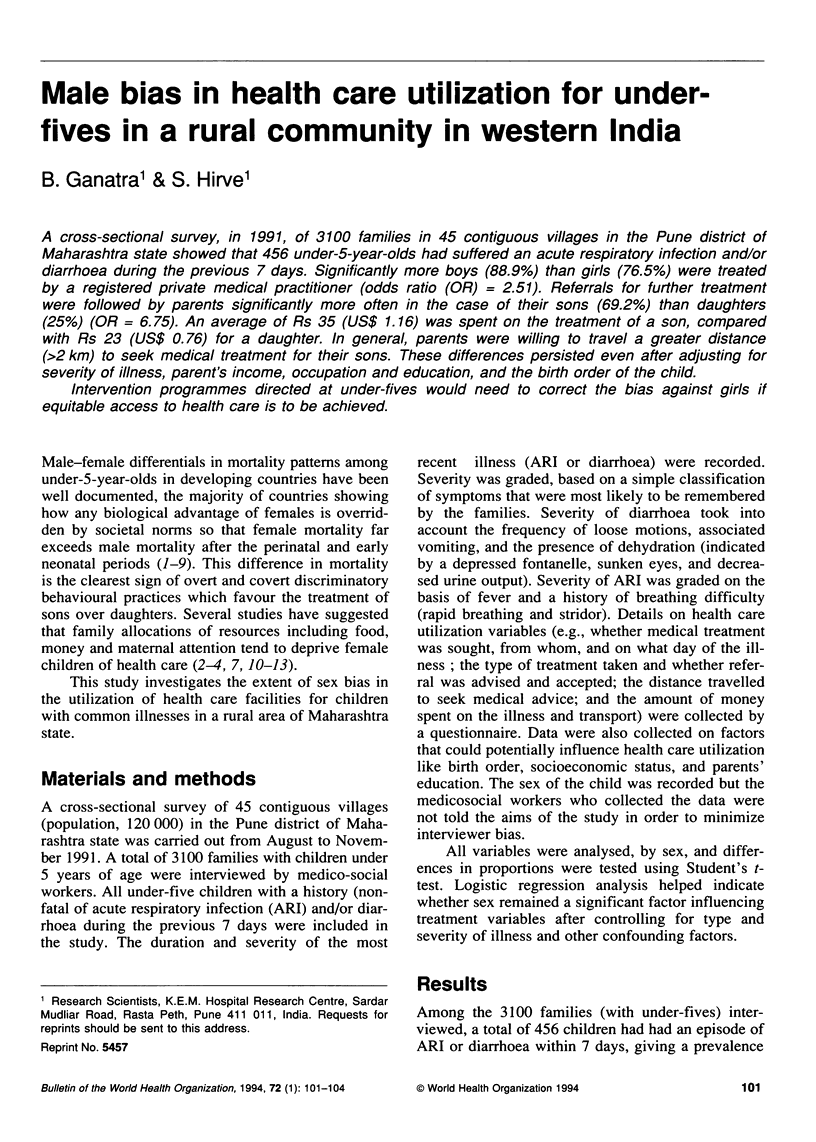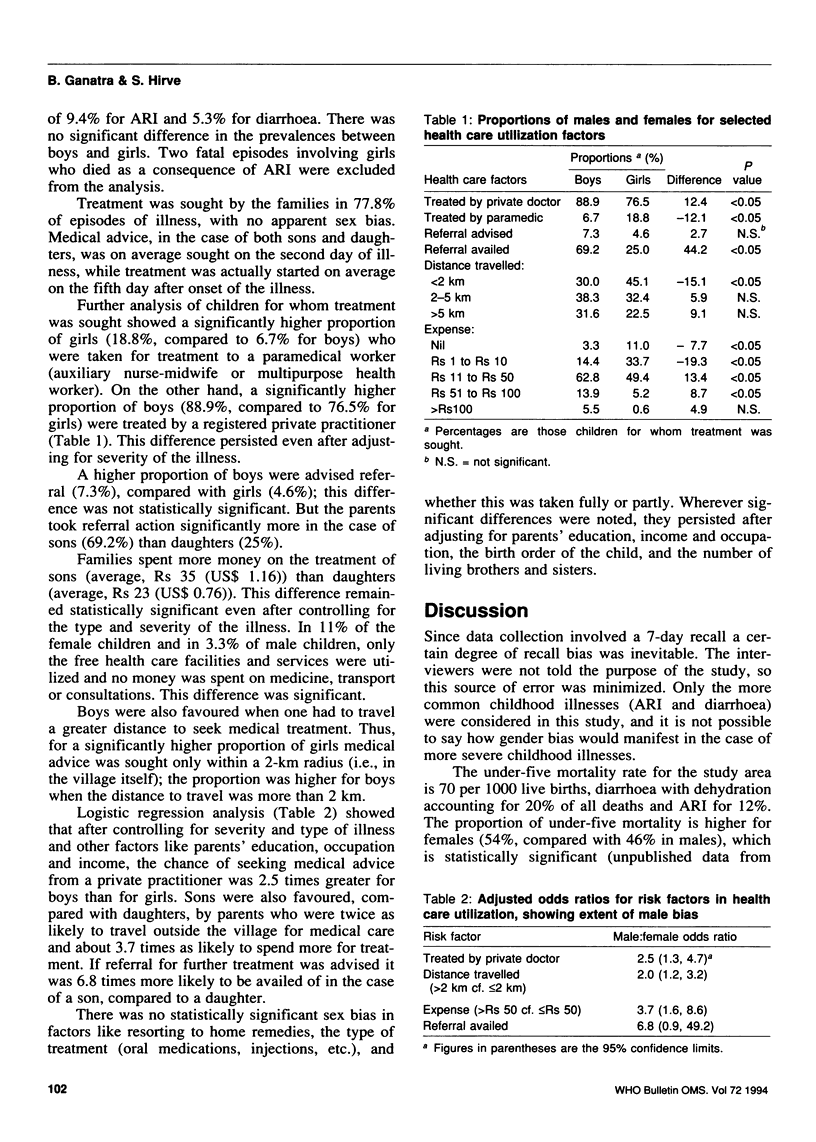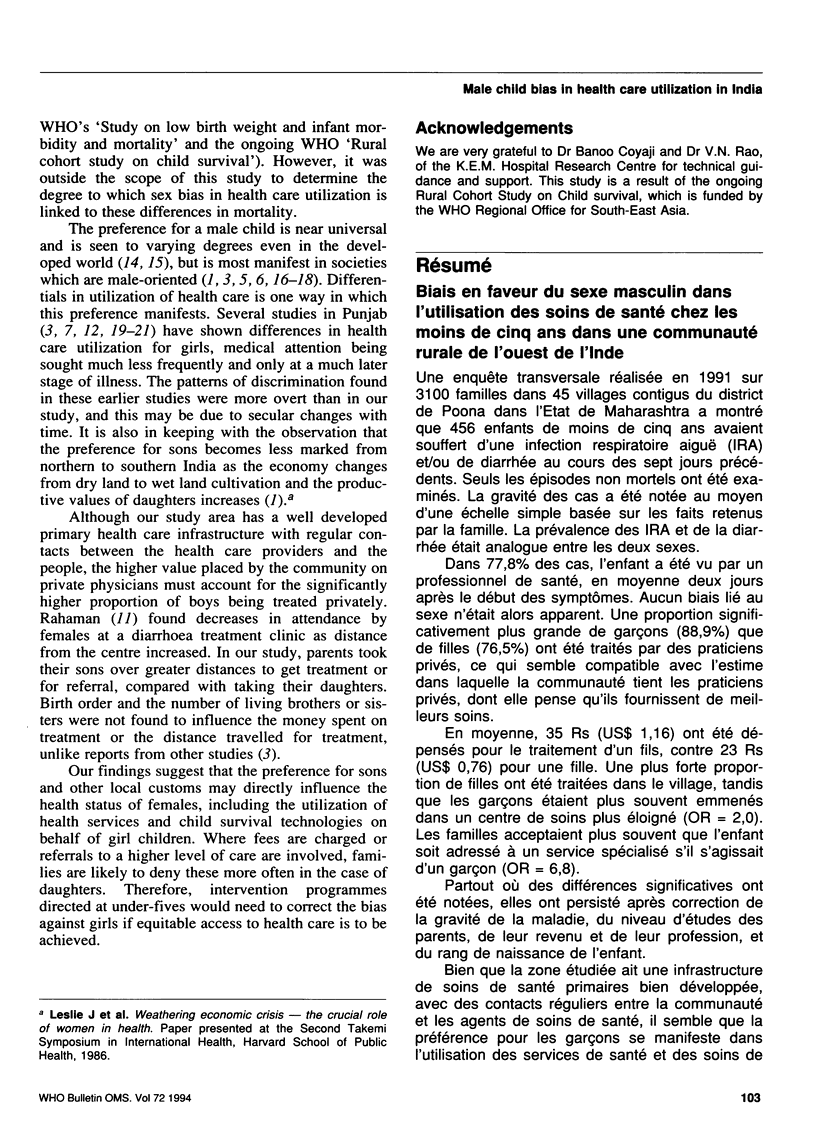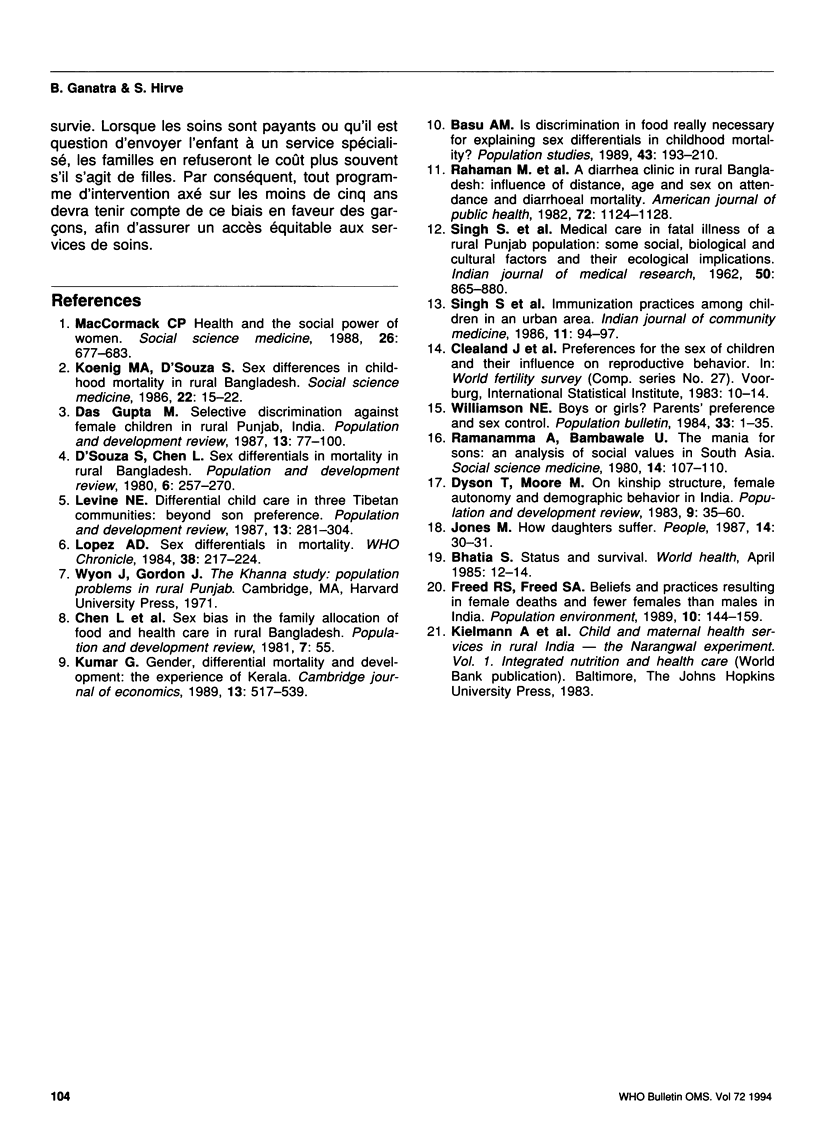Abstract
A cross-sectional survey, in 1991, of 3100 families in 45 contiguous villages in the Pune district of Maharashtra state showed that 456 under-5-year-olds had suffered an acute respiratory infection and/or diarrhoea during the previous 7 days. Significantly more boys (88.9%) than girls (76.5%) were treated by a registered private medical practitioner (odds ratio (OR) = 2.51). Referrals for further treatment were followed by parents significantly more often in the case of their sons (69.2%) than daughters (25%) (OR = 6.75). An average of Rs 35 (US$1 1.16) was spent on the treatment of a son, compared with Rs 23 (US$ 0.76) for a daughter. In general, parents were willing to travel a greater distance (> 2 km) to seek medical treatment for their sons. These differences persisted even after adjusting for severity of illness, parent's income, occupation and education, and the birth order of the child. Intervention programmes directed at under-fives would need to correct the bias against girls if equitable access to health care is to be achieved.
Full text
PDF



Selected References
These references are in PubMed. This may not be the complete list of references from this article.
- Koenig M. A., D'Souza S. Sex differences in childhood mortality in rural Bangladesh. Soc Sci Med. 1986;22(1):15–22. doi: 10.1016/0277-9536(86)90303-5. [DOI] [PubMed] [Google Scholar]
- Kumar G. Gender, differential mortality and development: the experience of Kerala. Cambridge J Econ. 1989 Dec;13(4):517–539. doi: 10.1093/oxfordjournals.cje.a035109. [DOI] [PubMed] [Google Scholar]
- Lopez A. D. Sex differentials in mortality. WHO Chron. 1984;38(5):217–224. [PubMed] [Google Scholar]
- MacCormack C. P. Health and the social power of women. Soc Sci Med. 1988;26(7):677–683. doi: 10.1016/0277-9536(88)90059-7. [DOI] [PubMed] [Google Scholar]
- Rahaman M. M., Aziz K. M., Munshi M. H., Patwari Y., Rahman M. A diarrhea clinic in rural Bangladesh: influence of distance, age, and sex on attendance and diarrheal mortality. Am J Public Health. 1982 Oct;72(10):1124–1128. doi: 10.2105/ajph.72.10.1124. [DOI] [PMC free article] [PubMed] [Google Scholar]
- Ramanamma A., Bambawale U. The mania for sons: an analysis of social values in South Asia. Soc Sci Med Med Anthropol. 1980 May;14(2):107–110. doi: 10.1016/0160-7987(80)90059-9. [DOI] [PubMed] [Google Scholar]
- SINGH S., GORDON J. E., WYON J. B. Medical care in fatal illnesses of a rural Punjab population: some social, biological and cultural factors and their ecological implication. Indian J Med Res. 1962 Nov;50:865–880. [PubMed] [Google Scholar]
- Williamson N. E. Boys or girls? Parents' preferences and sex control. Popul Bull. 1978 Jan;33(1):1–35. [PubMed] [Google Scholar]


